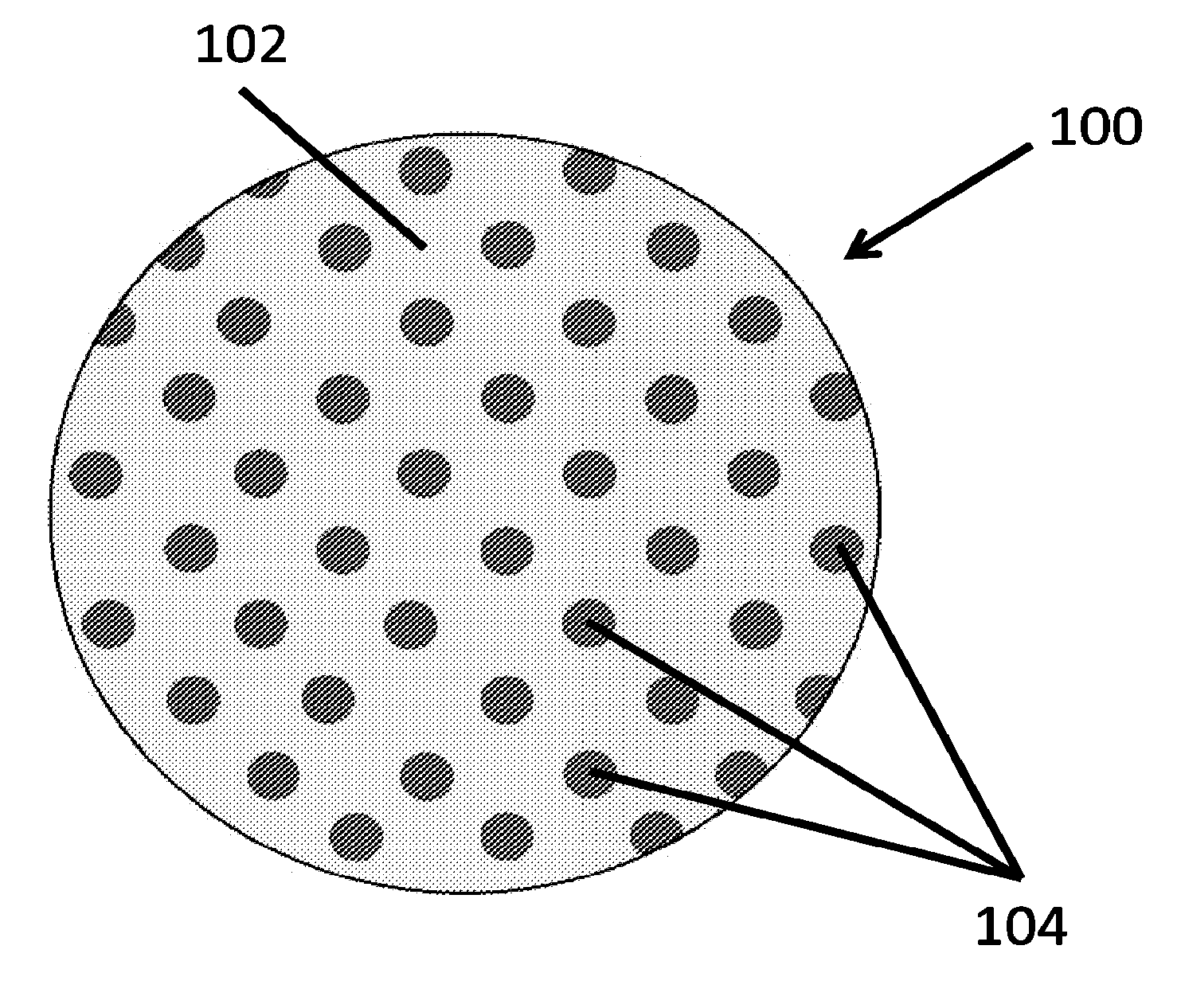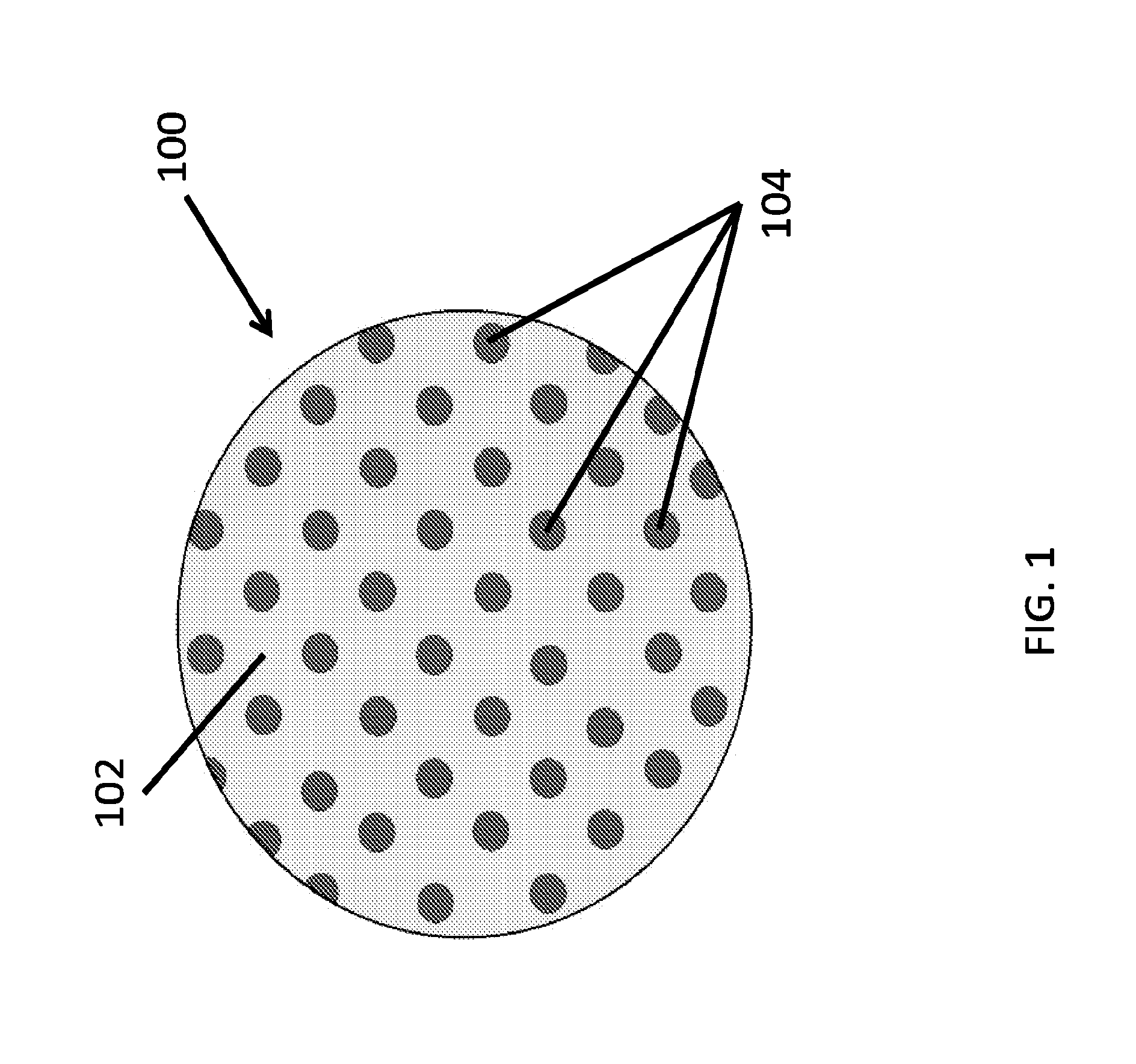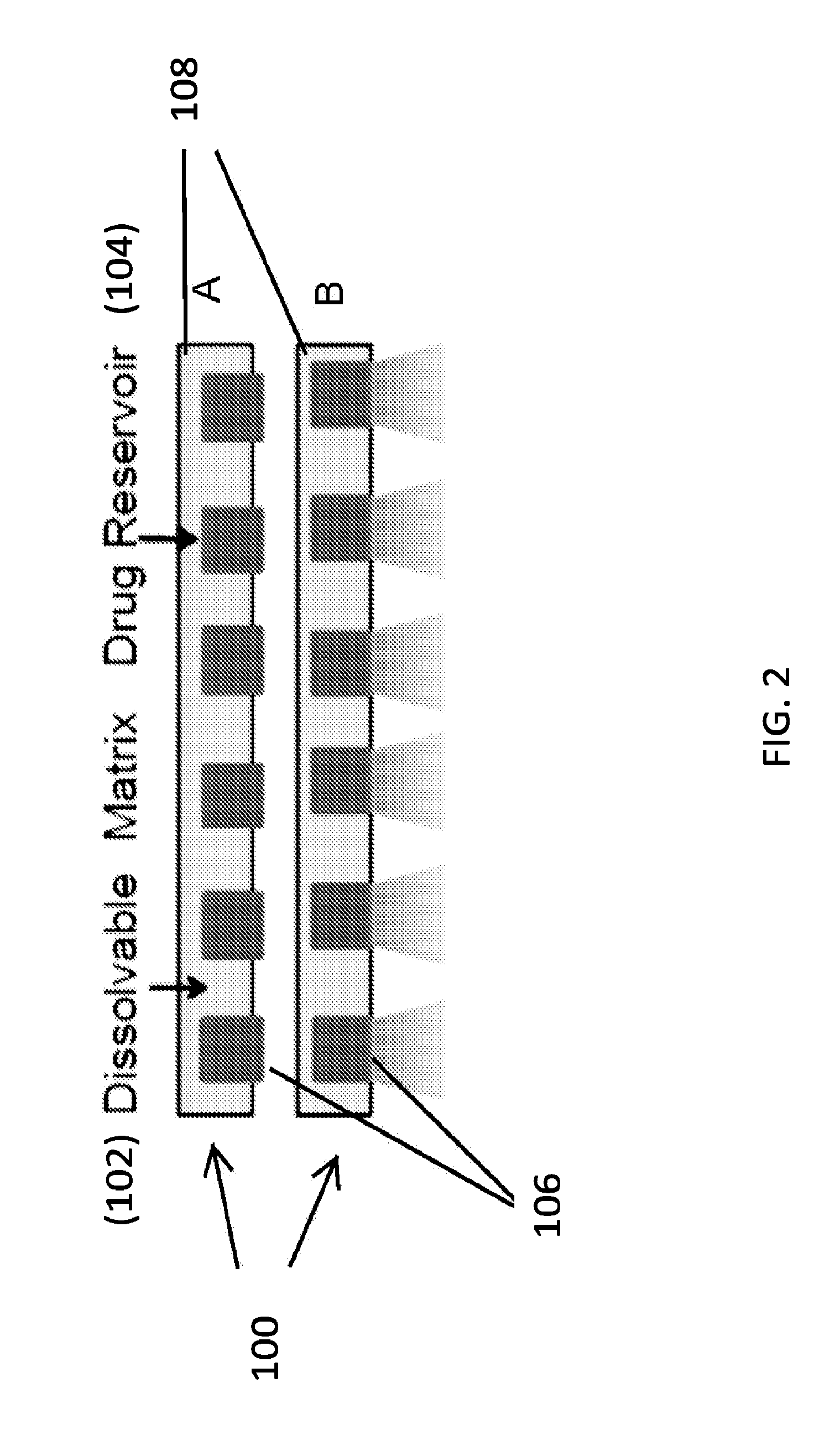Therapeutics dispensing device and methods of making same
a technology of therapeutics and dispensing devices, applied in the field of controlled release of therapeutics, can solve the problems of affecting the whole system, prone to injury, desiccation, pro-inflammatory stimuli, etc., and achieve the effect of prolonging the tim
- Summary
- Abstract
- Description
- Claims
- Application Information
AI Technical Summary
Benefits of technology
Problems solved by technology
Method used
Image
Examples
example 1
Fabrication of Polyvinyl Alcohol Microwafers
[0152]A clear polyvinyl alcohol (PVA) solution (15% w / v in water, 5 ml) was transferred with a pipette onto a PDMS template (3″ diameter) containing circular pillars (e.g., of 500 nm diameter and 500 nm height). The PVA solution was evenly spread to form a thin film completely covering the PDMS template and kept in an oven at 70° C. for 30 min. This step resulted in the formation of a thin and mechanically strong PVA template. The PVA template was peeled away from the PDMS template. The obtained PVA template was ˜3″ in diameter, contained circular wells (e.g., of 500 nm diameter and 500 nm depth). The PVA template was examined under a bright field reflectance microscope to determine its structural integrity.
example 2
Fabrication of Polyacrylic Acid Microwafers
[0153]A clear polyacrylic acid (PAA) solution (10% w / v in ethanol, 5 ml) was transferred with a pipette onto a PDMS template (3″ diameter) containing circular pillars (e.g., of 500 nm diameter and 500 nm height). The PAA solution was evenly spread to form a thin film completely covering the PDMS template and kept in an oven at 70° C. for 30 min. This step resulted in the formation of a thin and mechanically strong PAA template. The PAA template was peeled away from the PDMS template. The obtained PAA template was ˜3″ in diameter, contained circular wells (e.g., of 500 nm diameter and 500 nm depth). The PVA template was examined under a bright field reflectance microscope to determine its structural integrity.
example 3
Fabrication of Polyhydroxyethylmethacrylate Microwafers
[0154]A clear polyHEMA solution (12% w / v in ethanol, 5 ml) was transferred with a pipette onto a PDMS template (3″ diameter) containing circular pillars (e.g., of 500 nm diameter and 500 nm height). The PVA solution was evenly spread to form a thin film completely covering the PDMS template and kept in an oven at 70° C. for 30 min. This step resulted in the formation of a thin and mechanically strong polyHEMA template. The polyHEMA template was peeled away from the PDMS template. The obtained polyHEMA template was ˜3″ in diameter, contained circular wells (e.g., of 500 nm diameter and 500 nm depth). The polyHEMA template was examined under a bright field reflectance microscope to determine its structural integrity.
PUM
| Property | Measurement | Unit |
|---|---|---|
| Time | aaaaa | aaaaa |
| Depth | aaaaa | aaaaa |
| Surface area | aaaaa | aaaaa |
Abstract
Description
Claims
Application Information
 Login to View More
Login to View More - R&D
- Intellectual Property
- Life Sciences
- Materials
- Tech Scout
- Unparalleled Data Quality
- Higher Quality Content
- 60% Fewer Hallucinations
Browse by: Latest US Patents, China's latest patents, Technical Efficacy Thesaurus, Application Domain, Technology Topic, Popular Technical Reports.
© 2025 PatSnap. All rights reserved.Legal|Privacy policy|Modern Slavery Act Transparency Statement|Sitemap|About US| Contact US: help@patsnap.com



